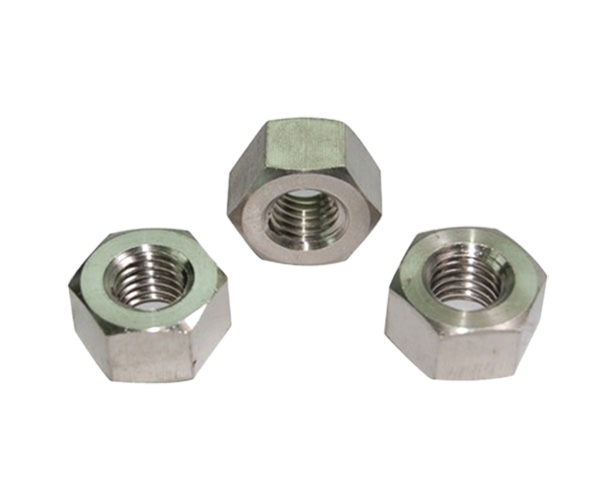Design of high-strength bolts and nuts steel
In the manufacture of fasteners, the correct selection of the fastener material is an important link, because the performance of fasteners is closely related to their materials. If the material selection is improper or incorrect, it may result in failure to meet the requirements, shortened service life, accidents or processing difficulties, and high manufacturing costs. Therefore, the selection of the fastener material is a very important link. Cold-drawn steel is a high interchangeability fastener steel produced by cold drawing process. Because it is formed by utilizing metal plastic working at room temperature, the deformation amount of each part is large, and the deformation speed it bears is also high, so the performance requirements of cold-drawn steel raw materials are very strict.
Spheroidizing annealing of high-strength bolts and nuts
In the production of countersunk head screws and hexagon socket head bolts using cold-drawing technology, the original organization of the steel material directly affects the forming ability during cold-drawing processing. The plastic deformation of local area during cold-drawing process can reach 60%-80%, so it is required that the steel material must have good plasticity. When the chemical composition of the steel material is fixed, the metallographic structure is the key factor that determines the plasticity. It is generally believed that coarse and flake pearlite is not conducive to cold-drawing forming, while fine and spherical pearlite can significantly improve the plastic deformation capacity of steel. For medium carbon steel and medium carbon alloy steel that are frequently used for high-strength nuts and bolts, spheroidizing (softening) annealing is carried out before cold drawing to obtain uniform and refined spheroidal pearlite in order to better meet the actual production needs.
Desphosphorization of high-strength bolts and nuts
The process of removing iron oxide plates from cold-drawn steel wire rod is called descaling and desphosphorization, and there are two methods: mechanical desphosphorization and chemical pickling. The use of mechanical desphosphorization instead of chemical pickling of wire rod has not only improved the production efficiency, but also reduced environmental pollution.
Cold drawing of high-strength bolts and nuts
There are two purposes for the drawing process: one is to modify the size of the raw material; the other is to use the strengthening effect of deformation to obtain the basic mechanical properties of the fastener. For medium carbon steel and medium carbon alloy steel, there is another purpose, that is, to break the lamellar carburized structure obtained after controlled cooling of the wire rod as much as possible in the drawing process, so as to prepare for obtaining granular carburized structure after spheroidizing (softening) annealing. However, some manufacturers arbitrarily reduce the number of drawing passes to reduce costs, which increases the work-hardening tendency of wire rod steel due to excessive reduction of the reduction rate, directly affecting the cold drawing performance of wire rod steel.
Cold forging of high-strength bolts and nuts
Usually, the forming of the head of the bolt is produced by cold-drawn plastic working. Compared with cutting processing, the metal fibers (metal wire) are continuously shaped along the product shape without interruption, thus improving the product strength, especially the excellent mechanical properties. Cold-drawing forming process includes cutting and forming, single-station single-strike, double-strike cold-drawing and multi-station automatic cold-drawing.
Thread processing of high-strength bolts and nuts
The thread of high-strength bolts and nuts is generally processed by cold working, so that the thread blank of a certain diameter range is formed by passing through the screw plate (die) through the rubbing (rolling) process, and the plastic flow lines of the thread part are not cut off, so the strength is increased, the accuracy is high, and a product with uniform quality is obtained, thus it is widely used. In order to obtain the thread outer diameter of the final product, the required thread blank diameter is different because it is restricted by factors such as thread accuracy and whether the material has a coating. Rolling (rubbing) thread refers to the processing method of forming thread teeth by utilizing plastic deformation.
Treatment of high-strength bolts and nuts
According to the technical requirements, high-strength fasteners must be quenched and tempered. Heat treatment and tempering are used to improve the comprehensive mechanical properties of fasteners to meet the specified values of tensile strength and yield strength ratio. Heat treatment process has a crucial influence on the intrinsic quality of high-strength fasteners, especially on its internal quality. Therefore, to produce high-quality high-strength fasteners, advanced heat treatment technology and equipment is necessary. Because the production volume of high-strength bolts is large and the price is low, and the thread part is a relatively precise structure, it is required that the heat treatment equipment must have the ability of large production capacity, high degree of automation, and good quality of heat treatment.
Inspection of high-strength bolts and nuts
In summary, the process factors that affect the quality of high-strength bolts and nuts include steel design, spheroidizing annealing, descaling and desphosphorization, drawing, cold-drawing forming, thread processing, heat treatment, etc., and sometimes are the superposition of various factors.
 English
English


















